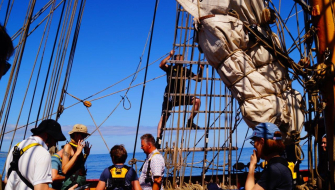Leaving Horta
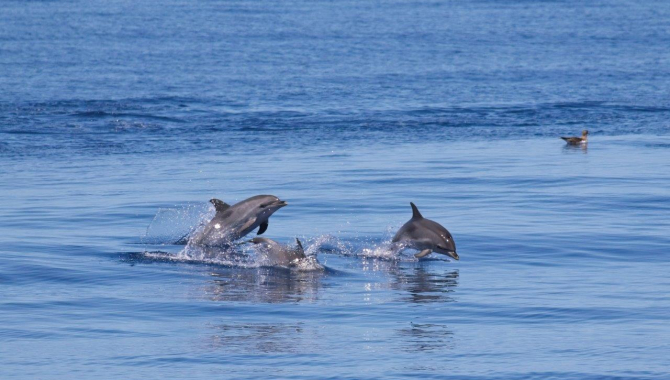
Preparing to set sail from Horta brought appreciation for the history that would be represented through this voyage. These harbour walls have shielded many a ship from Atlantic waves and are now laced with murals from Atlantic-crossers who had made Horta their first port of call after many isolated days at sea.
During the handover days, an important job was to refresh Europa’s own mural. Even today, the harbour remains the world’s 4th most visited, providing refuge and replenishment for boats in the vast Atlantic blue. Ornate architecture, pastel buildings with terracotta roofs, and calçada portugesa inspired basalt cobbles line the seafront, enforcing the feeling of history the small city holds.
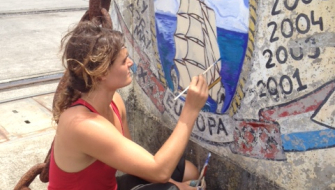
As Europa made her way out of the harbour and through the islands, we took time to notice the wildlife that escorted the ship towards the open seas. On portside, Atlantic spotted dolphins hunted. On starboard, skipjack tuna found hung in the shadow of the steel hull, easily keeping up with our 7 knots. Aste, Marcus and Victor – keen fishermen- set out a line. Cory’s shearwaters rested on the quiet swell, another occasionally breezing past with the characteristic shearwater flap-flap-glide.
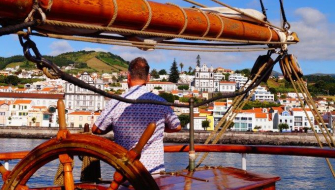
The Açores create a physical obstacle for ocean currents, meaning nutrient rich water from the ocean depths wells up into the sunlit surface, feeding first the photosynthetic life and transferring energy up the food web to charismatic predators that attract tourists to the area.
Soon we would be in the open ocean where nutrients remain deep below light penetration and wildlife is more sparse. In these areas, we will delve into the world of surface ocean planktonic life via manta trawls, aiming also to investigate the anthropogenic plastic pollution of the sea surface. In further investigation of the ocean’s diversity, we will conduct bird surveys to help understand the lives of storm birds (Procellariiformes).
For now, though, we turn our attention to the ship. With weeks at sea ahead, and Sail Amsterdam to end the voyage, sail training is the priority. Helm and lookout familiarizations teach everyone onboard, no matter their experience, to steer the ship and keep keen eyes out for hazards in the water.
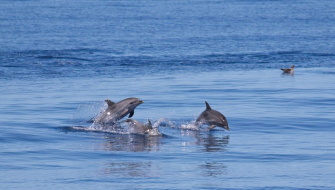
The next item on the agenda is divisive – some people dream of climbing Europa’s rigging from the moment they first lay eyes on her. For others, climbing represents a more daunting personal challenge to overcome fear. There are also those who are more than happy with both feet firmly on deck. All stances are respected. Emma (our bosun) gathers the intrepid climbers and begins the familiarization – how to put a harness on, which lines to clip in to, where to place your hands. There is an excited buzz as voyage crew test their strength and don harnesses. The first few climbers are eager and confidently make their way up the rig, taking time to adjust to the new movements. On reaching the first platform, they descend back to deck where everyone congratulates them on making it look so easy. It’s still the first day of the voyage- most of us met for the first time the day before- but as each takes their turn, we check each other’s harnesses and celebrate each other’s accomplishments. More nervous climbers are offered words of encouragement but not pressured out of their comfort zone. Marcus and Loek (deckhands) offer a calming presence on the platform and monitor how everyone is doing.
It’s nice to see the crew gathering in support of each other in the early days of the trip. This is the tone Europa sets, bringing groups of people from all backgrounds together on an unforgettable adventure. We look forward to what else lies in store on our passage to Sail Amsterdam.
